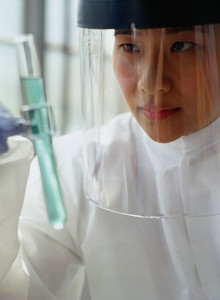In a 2009 article by Dr Cheng Liu, founder and CEO of Eureka Therapeutics in California, and Andreia Lee in Trends in Bio/Pharmaceutical Industry on Antibody Therapeutics, it is stated that ADCC (Antibody Dependent Cell-mediated Cytotoxicity) enhancement is a key strategy for improving therapeutic antibody drug efficacy against cell-surface targets in cancer and chronic inflammation. It takes advantage of patients’ innate immune cells to kill target cells. The functions are primarily triggered through direct interaction of the Fc domain of human immunoglobulin (in most cases IgG1) with the corresponding receptors. Therapeutic antibodies with enhanced ADCC are anticipated to have a clinical advantage owing to increased specific lysis of target cells, such as cancer cells, mediated by Fc receptors present on natural killer cells, macrophages, and other immune cell types.
ADCC enhancement technologies for monoclonal antibodies
Biosimilars/Research
|
Posted 17/02/2010
 0
Post your comment
0
Post your comment

Dr Liu describes two types of ADCC enhancement technologies: Fc mutagenesis and glycoengineering (see Table below). Antibodies with optimised binding to Fc receptors show enhanced ADCC activity against target-expressing cancer cell lines with human PBMC. Furthermore, markedly improved anti-tumour activity has been observed in xenograft models in FcRIII-knockout mice that express the low-binding allele of human CD16A. Recently, a primate study of anti-CD19 recombinant antibody with enhanced ADCC by Xencor technology showed positive efficacy results in eliminating B cell population.
According to him, ADCC enhancement through glycoengineering is becoming the preferred technology platform because of the low probability of immunogenicity and less impact on the overall antibody protein structural stability introduced by altered glycosylation. Kyowa Hakko Kirin (better known as its US subsidiary Biowa) developed Fut8 knockout CHO cell lines that produce antibodies with an altered glycosylation by the removal of fucose. Another approach by GlycArt (acquired by Roche in 2005) uses the overexpression of recombinant beta 1,4-N-acetylglucosaminyltransferase III (GnT-III) in production cell lines to produce antibodies enriched in bisected oligosaccharide. A novel approach recently developed by Eureka Therapeutics produces antibodies with glycosylated oligosaccharide through engineering of the CHO production cell line.
All three approaches achieved dramatically enhanced ADCC activity in modified antibodies, and are able to overcome the F (phenylalanine)/F and F/V (158 valine) genotypes that are only able to support low ADCC with wild-type antibodies. The mechanism of all three approaches involves improving the binding affinity to low-affinity activating FcγRIIIa (the Fcγ receptor IIIa (CD16) that is present on position 158 (Phe or Val) in the membrane-proximal, IgG-binding domain), while deferring binding to the low-affinity inhibitory IgG Fc receptor FcγRIIb.
ADCC enhancement technologies
| Company | Technology | FcγRIIIa | FcγRIIb | Validation |
| Xencor | Fc mutagenesis | Increased affinity | No change | Preclinical |
| Macrogenics | Fc mutagenesis | Increased affinity | Reduced affinity | Preclinical |
| Kyowa Hakko/ Biowa | Glycoengineering | Increased affinity | No change | Phase I |
| GlycArt (Roche) | Glycoengineering | Increased affinity | n/a | Phase I |
| Eureka Therapeutics | Glycoengineering | Increased affinity | Reduced affinity | Preclinical |
Reference:
Cheng Liu and Andreia Lee. ADCC Enhancement Technologies for Next Generation Therapeutic Antibody. Trends in Bio/Pharmaceutical Industry. 2009. 13-17.
Source: Trends in Bio/Pharmaceutical Industry
General
Samsung Bioepis wins Pyzchiva case; Regeneron patent rulings threaten foreign biosimilars
Chinese biosimilars go global: growth, partnerships, and challenges
What is the future for the US biosimilar interchangeability designation

Biosimilars/Research Posted 05/06/2025
Biosimilar clinical efficacy studies: are they still necessary?

Biosimilars/Research Posted 27/05/2025
The best selling biotechnology drugs of 2008: the next biosimilars targets








Post your comment